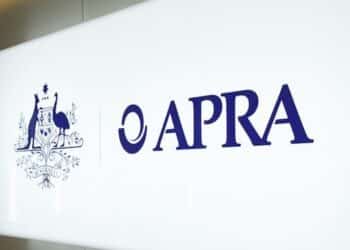The advice community has been ramping up its scrutiny of the Compensation Scheme of Last Resort’s (CSLR) implementation and the inherently unfair prospect of covering the costs for the Dixon Advisory collapse.
In July, for instance, Association of Independently Owned Financial Professionals (AIOFP) executive director Peter Johnston referred the AIOFP’s concerns around the role “Treasury bureaucrats” have played in the construction of the CSLR to the National Anti-Corruption Commission (NACC) for investigation.
Just a week later, the Financial Advice Association Australia (FAAA) launched a dedicated CSLR hub on its website and a comprehensive review of the litigation that the Australian Securities and Investments Commission (ASIC) has taken against Dixon so far.
The conclusion of its review, the FAAA said, is that a public inquiry is “essential” to fully understand who was responsible for the “debacle”.
On Thursday, FAAA general manager of policy, advocacy and standards Phil Anderson released the first part of a series of papers that the association is delivering to detail the reasons both the FAAA and advisers are angry at how the CSLR has played out.
In his part, the newly nicknamed “Angry Anderson” said the ability of a parent company to wipe its hands of the actions of its subsidiary is at the top of the list of incendiary factors.
“The fact that E&P Financial Group (E&P) simply put its subsidiary Dixon Advisory into administration in full knowledge of the consequence for clients and the rest of the financial advice profession, and in the context of the expected establishment of the CSLR, is very concerning,” Anderson said.
Speaking with ifa earlier this week, he highlighted the need for a measure of some kind that could guard against this kind of action resulting in unrelated financial advisers covering the bill through the CSLR.
“One of the things that we have suggested is that if there was an ability for the CSLR to be able to make a special levy on a parent entity of a business that put a subsidiary into administration, that’s one way of providing a disincentive to place a subsidiary into administration,” Anderson told ifa.
“That is one potential solution, given that there are deep consequences of changing the insolvency laws, then your only other solution is to find a way of penalising the entity that put the subsidiary into administration, and that would be through some sort of special levy.”
In his paper, he noted that E&P had previously claimed it would aim to arrange Dixon’s administration in a manner that would provide “equitable treatment of all DASS clients/creditors”.
Given the class action against E&P was settled in April for a grand total of $16 million – $12 million of which was covered by PI insurance – Anderson said Dixon clients would not feel receiving “5 cents in the dollar” was an equitable settlement.
“The financial advice profession, facing a bill of as much as $135 million to compensate these clients, certainly does not think that anything about this is equitable,” he said.
“After all, why should financial advisers, who do the right thing, be paying for the misconduct of Dixon Advisory?”
Clients moving to E&P
ifa has previously covered the prospect of E&P benefiting from CSLR payments, with FAAA chief executive Sarah Abood raising concerns in May.
A large number of both Dixon advisers and clients moved across to a different E&P AFSL – ASIC recently detailed that about 3,280 of the 4,100 Dixon clients had moved to E&P, along with as many as 39 advisers.
“According to the administrator, this was all done at no cost to Evans & Partners and at no benefit to the creditors of Dixon Advisory,” Anderson said.
“Further, ASIC has taken action against a director of Dixon Advisory for allegedly changing the constitution of Dixon Advisory and executing a deed of acknowledgement of debt just prior to going into administration, seemingly for the reason of avoiding the repayment of a $19 million debt owed to Dixon Advisory by E&P Operations.”
ASIC commenced civil penalty proceedings against Paul Ryan in the Federal Court in August 2023. Hearings on the matter were held in June 2024, however a judgment is yet to be delivered.
“This alleged conduct is hardly consistent with an entity seeking to achieve an equitable settlement,” Anderson said.
He also pointed to the roughly $134 million in fees that Dixon Advisory and related entities “extracted” from the US Masters Residential Property Fund (URF) from 1 January 2015 and 30 June 2018.
“There is no suggestion that any of this will be returned to the benefit of Dixon Advisory clients who lost so much money on the URF Fund. The $4 million that E&P contributed to the class action settlement is a tiny fraction of the fees that this business received from this fund,” Anderson said.
However, what will “infuriate the advice profession even more” is how much E&P is set to gain from the CSLR.
“Given the high percentage of Dixon Advisory clients who moved over to Evans & Partners, it will be E&P that stands to benefit from the receipt of additional funds under advice, when the compensation is paid by the CSLR into the predominantly SMSFs of the former Dixon Advisory, now Evans & Partners, clients,” he said.
“Going forward, it will be E&P who will be the ones earning fees on this money.”




Putting aside the issue of the undisclosed conflicts of interest in managing the URF assets, the main problem seems to me that a minority of investors though they were getting a liquid investment (following the public listing), when the underlying real estate assets in New York State USA were highly illiquid. So a minority of Dixon investors panicked and wanted out, driving down the unit price (when there were few problems with the underlying book value of the real estate) – which is when the trouble really started. I believe that the sophisticated investors knew this (i.e. those still with E&P), but were rail-roaded by a minority(of ultra-conservative and impatient investors) who should never have put URF in their super fund portfolio! I never saw this a s a problem with advice, but with the management gravy train that the lead individual seemed to have developed without proper outsight by the investment board.
Money aside, if ASIC are taking Paul Ryan to court, why do they allow him to be the CEO of an AFSL. Does fit and proper person mean something different if you are listed on the ASX?
What is the potential liability a Financial Planner has to carry in their personal name from future CSLR? Seems product manufacturers have nil – so that is simple accounting?
Why how did the liquidators allow the transfer of 3000 ongoing client revenue to e&p for nil consideration? Surely this can be challenged and liquidators put on the hook? This is a disgusting precedent and will continue to be an issue should further subsidiaries just be white anted and value shifted to parent company
It could be a simple licensing condition for a licensee that no subsidiary that gave advice has ever been put into administration.
Perhaps the previous E&P CEO that oversaw the whole process should be asked to explain exactly how and why this strategy was executed and implemented ?
Why didn’t the administrators explore selling the client book to an external party? I would have been interested in buying some clients.
Excuse my ignorance, but transferring 3280 clients from Dixon Advisory to E&P is a business worth tens of millions. If I am reading Anderson’s comments correctly, E&P paid nothing for it! This is outrageous!
If it was only a handful of clients, then it probably wouldn’t be an issue. But according to the numbers presented, we are talking about 80% of the clients from one business being transferred to another at no cost for the receiving party. That wouldn’t happen by accident. It must have been a carefully calculated and co-ordinated scheme. Surely this is criminal behaviour? Has the administrator referred the matter to the police? Have ASIC and the ATO greenlighted this behavour? If my business runs into trouble, can I simply set up a new company and transfer all of my clients across without any CGT worries and avoid the liabilities from the old business? Surely not.
I agree with Anderson. We need a public enquiry into this matter.
Criminal transfer? Ever tri d to transfer a HIN. Let’s not let facts get I. The way of a good story.
You are correct. This is outrageous. What I don’t understand is why only IFA are covering this? This is an absolute scandal, yet I have read nothing about it in mainstream media.
What dodgy behaviour from E&P, no responsibility for their subsidiary actions and again financial advisers left filling the bucket up. No confidence in government or ASIC to treat advisory profession fairly which then has big impact on Aussie consumers
https://asic.gov.au/for-business/small-business/closing-a-small-business/illegal-phoenix-activity/
And what does corrupt useless ASIC do = NOTHING
Illegal phoenix activity occurs when a new company, for little or no value, continues the business of an existing company that has been liquidated or otherwise abandoned to avoid paying outstanding debts,
LNP and ALP don’t care, they carefully structured the CSLR scheme with the clear intention of passing the costs of compensation onto small businesses. They fully knew about the Dixon’s problem when setting up the scheme and both parties took deliberate steps to ensure anyone but the respective governments were on the hook because they knew how ineffective ASIC would be in making Dixons / Evans Partners pay for their own sins.
Disgusting corrupt government letting this happen then asking why advice costs, in the meantime bleeding us dry. Pathetic